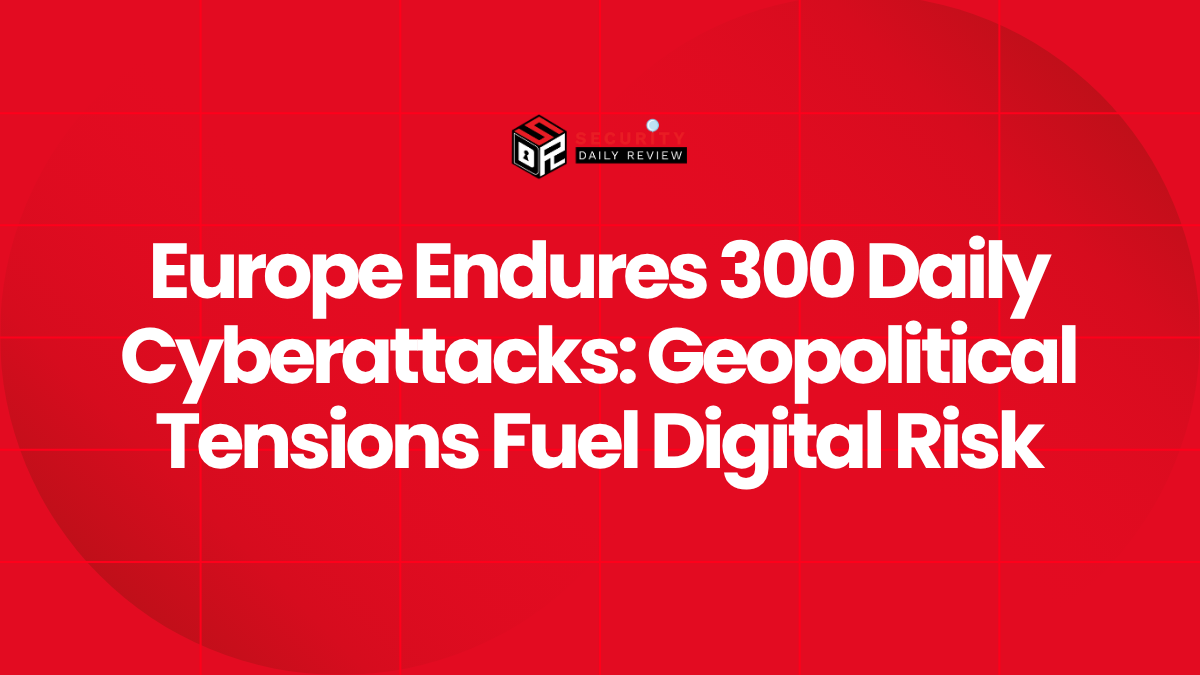Europe is facing a mounting cybersecurity crisis fueled by intensifying geopolitical tensions, particularly related to the Russia-Ukraine conflict. Once considered relatively secure, European nations now find themselves in one of the most cyber-targeted regions globally, with some countries enduring hundreds of cyberattacks daily. This digital offensive targets both public infrastructure and private enterprise, illuminating Europe’s growing cyber vulnerability amid escalating hybrid warfare and uneven economic conditions.
Geopolitical Strain Has Turned Europe Into a Prime Cyber Target
Military tensions and hybrid warfare are influencing the surge in cyberattacks across Europe.
Driven by a confluence of political instability and digital warfare innovation, the frequency and sophistication of cyberattacks on European soil have increased dramatically over the past year. Poland, for instance, now records up to 300 cyberattacks daily. The perpetrators range from state-sponsored actors to ideologically-motivated hacktivist groups, most notably those aligned with Russia.
Cyber incidents are becoming bolder and more penetrative. A stark example was the cyberattack on a dam in Norway, underscoring vulnerabilities within critical infrastructure. Malware infection rates in Europe are now three to four times higher than those in the United States, leaving small and medium-sized businesses (SMBs)—often integral links in broader supply chains—especially exposed.
Critical Infrastructure and National Resilience Are Under Siege
Europe’s energy networks and defense posture reflect widening gaps in digital and physical protections.
Suspected Russian hybrid operations—including cyberattacks, drone incursions, and airspace violations—have added strain to Europe’s energy sectors. While direct assaults on energy infrastructure have not yet materialized this winter, related incidents like the Estlink-2 power cable severance serve as wake-up calls. These incursions coincide with increased cyber probing, suggesting a broader strategy to destabilize systems underpinning public services and economic stability.
In response, the European Union has introduced the Defense Readiness Roadmap 2030. Central to this strategy are proposed deterrents across land, sea, air, and cyber domains, notably the European Drone Defense Initiative and Eastern Flank Watch. The roadmap also commits to joint military procurement, aiming for €3.4 trillion in spending over the next decade to ensure interoperability and resilience—both digitally and kinetically.
Cyber Threats are Escalating in Both Scope and Complexity
From AI-enhanced disinformation to costlier ransomware, attackers are evolving faster than defenders.
Attacks are not only increasing in volume—they’re also becoming more sophisticated. Microsoft reports that adversarial states including Russia, China, Iran, and North Korea have ramped up the use of artificial intelligence (AI) to fuel attacks. These campaigns include AI-generated misinformation, deepfake content to impersonate officials, and advanced phishing techniques to infiltrate Western enterprises. July 2025 alone saw more than 200 AI-driven incidents attributed to these actors.
Data theft, reputational damage, and operational disruption are increasingly prioritized over traditional ransomware encryption tactics. In the UK, the number of “nationally significant” cyber incidents rose to 204 between September 2024 and August 2025, more than double the previous year. The National Cyber Security Centre (NCSC) reported that 18 of these were “highly significant,” including an attack on Jaguar Land Rover categorized as an “economic security incident.”
Attack vectors are also diversifying. Groups like Scattered Lapsus$ Hunters have executed mass data leaks affecting over 40 UK-based organizations including Co-op and Marks & Spencer. Meanwhile, Distributed Denial of Service (DDoS) attacks and cyber-espionage continue to challenge both government and corporate defenders.
The EU Is Responding, But Implementation Remains Uneven
Key regulatory steps like the NIS2 Directive and DORA Act are reshaping the digital security landscape, but gaps remain.
To address this rising tide, the European Union has enacted the NIS2 Directive (Directive 2022/2555), replacing its predecessor NIS1. This updated framework, applicable across 18 critical sectors, imposes clear cybersecurity obligations on both public and private organizations. It mandates risk management protocols, incident reporting, and cooperation mechanisms amongst Member States under a unified cybersecurity strategy.
The NIS2 Directive is complemented by the Digital Operational Resilience Act (DORA), focused specifically on the financial sector. Together, these regulations signal a shift from mere prevention to resilience-based security postures—where rapid recovery and systemic continuity are central.
However, the speed and depth of adoption vary across Member States. Europe’s relatively low levels of cyber insurance coverage and fragmented cyber capabilities hinder a cohesive regional defense. As highlighted by Munich Re, this under-preparedness, combined with economic stagnation, could contribute to social unrest and broader civil insecurity.
Actionable Insights for European Organizations
Security leaders must brace for persistence, diversity, and escalation in cyber threat landscapes across Europe.
In light of recent trends, cybersecurity stakeholders should consider the following steps:
- Embed resilience into security strategies : Assume breaches will occur. Invest in rapid response, threat intelligence, and business continuity planning.
- Prioritize supply chain security : SMBs in supply chains represent weak links. Implement vendor risk assessments and secure software development life cycles.
- Stay compliant with EU directives : Familiarize teams with the operational and reporting requirements under NIS2 and DORA.
- Leverage threat intelligence sharing platforms : Cross-border cooperation and real-time alerting are key in neutralizing fast-evolving threats.
- Explore AI for defense : While AI enables adversaries, it can also empower defenders with advanced anomaly detection and automated response mechanisms.
Europe’s digital threat landscape is no longer confined to digital-only battlefields. As cyberattacks intersect with kinetic power plays, economic vulnerabilities, and defense infrastructure, national resilience will depend not only on policy but also on real-time operational readiness.









